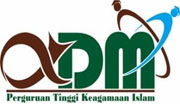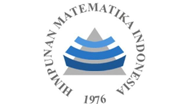Exploration of Mathematical Concepts in Oceanography: A Literature Review
Abstract
Mathematics is crucial in oceanography, enabling the modeling of complex ocean phenomena such as currents, waves, tides, and pollutant dispersion. This paper highlights the use of partial differential equations, numerical methods, and spatial statistics in simulating physical ocean processes. Key models include the Navier–Stokes equations for fluid flow, advection–diffusion models for pollutant transport, and wave models for ocean surface dynamics. These models are vital for practical applications like climate prediction, disaster mitigation, and marine ecosystem management. For example, modeling sea surface temperature aids in forecasting El Niño and La Niña events that impact rainfall and fisheries. In Indonesia, a maritime country highly exposed to ocean hazards, mathematical tools support marine research, policy planning, and sustainable development. This study presents an overview of mathematical models in oceanography, emphasizing their analytical strength and value in addressing environmental and resource challenges.
Keywords
Full Text:
PDFReferences
P. K. Kundu, I. M. Cohen, and D. R. Dowling, Fluid Mechanics, 6th ed. Academic Press, 2015.
D. B. Chelton, M. G. Schlax, and R. M. Samelson, “Global observations of nonlinear mesoscale eddies,” Prog. Oceanogr., vol. 91, no. 2, pp. 167–216, 2011, doi: 10.1016/j.pocean.2011.01.002.
J. W. Creswell and J. D. Creswell, Research Design: Qualitative, Quantitative, and Mixed Methods Approaches, 5th ed. Thousand Oaks, CA: Sage Publications, 2018.
G. Riduwan, Methods and Techniques for Writing a Thesis. Bandung: Alfabeta, 2008.
BMKG, Ocean Dynamics and the Role of Oceanographic Modeling. Jakarta: Center for Maritime Meteorology, BMKG, 2020.
NOAA, “Ocean Modeling and Data Assimilation,” 2021. [Online]. Available: https://www.noaa.gov
R. H. Stewart, Introduction to Physical Oceanography. College Station, TX: Texas A&M University, 2008. [Online]. Available: https://ocean.tamu.edu/ [Open Access Textbook].
J. Zhang et al., “A review of ocean data assimilation in coupled ocean–atmosphere models,” Progress in Oceanography, vol. 149, pp. 1–23, 2016, doi: 10.1016/j.pocean.2016.10.001.
L. Breiman, “Random forests,” Machine Learning, vol. 45, no. 1, pp. 5–32, 2001, doi: 10.1023/A:1010933404324.
Muh. Fachrul Latief, Numerical Solution for Solving The Navier-Stokes Equations in A Circular Cylinder, Gorontalo: Jurusan Fisika, Fakultas Matematika dan Ilmu Pengetahuan Alam, Universitas Negeri Gorontalo. 2023. Jurnal normalita Vol.11, Nomor 2 Mei 2023, hlm. 382-394, ISSN: 2252-5920.
Vistarani Arini Tiwow and Jasruddin Daud Malago, Application of Navier-Stokes Equations To Laminar Fluid Flow Case in Unhorizontal Pipe, Makassar: Universitas Negeri Makassar, 2015. Jurnal Sainsmat, Maret 2015, Halaman 51-56 ISSN 2086-6755.
R. D. Susanto, A. L. Gordon, and S. Wijffels, “The Indonesian throughflow during 2004–2006 as observed by the INSTANT program,” Dynamics of Atmospheres and Oceans, vol. 50, pp. 115–128, 2010, doi:10.1016/j.dynatmoce.2009.12.002
A. Kurniawan and R. A. Pradana, “Modeling of sediment material flow due to tidal currents for maintaining port water depth: A case study of Tanjung Perak–Teluk Lamong Port, Surabaya,” GEOID, vol. 12, no. 1, pp. 60–67, 2024.
D. G. Pratomo, K. Hutanti, and Khomsin, “Analysis of sediment distribution patterns to support water depth maintenance using 3D hydrodynamic modeling: A case study of Tanjung Perak Port, Surabaya,” GEOID, vol. 14, no. 2, pp. 78–86, 2024.
Syawaluddin Hutahaean, Nonlinear Wave Equation over a Sloping Seabed, Bandung: Pusat Studi Teknik Kelautan Fakultas Teknik Sipil dan Lingkungan Institut Teknologi Bandung, 2008. ISSN 0853-2982.
H. Imamura, S. Takahashi, and T. Abe, “Numerical modeling of the 2004 Indian Ocean tsunami in Banda Aceh and surrounding regions,” Nat. Hazards Earth Syst. Sci., vol. 6, no. 3, pp. 849–857, 2006, doi: 10.5194/nhess-6-849-2006.
Pengfei Xue, et al, Coupled Ocean‐Atmosphere Modeling Over the Maritime Continent: A Review, JGR Oceans, Volume 125, Issue 6, 2020.
BPPT, Study of Tsunami Potential in Southern Java Based on Nonlinear Modeling, Report on Tsunami Disaster Risk Assessment for Southern Java, BPPT – Center for Disaster Mitigation Technology, Jakarta, 2021.
D. S. Dean and R. R. Smith, “On the derivation and application of the Korteweg–de Vries equation for tsunami simulation,” Ocean Modelling, vol. 9, no. 3, pp. 269–284, 2005, doi: 10.1016/j.ocemod.2004.10.002.
Muhammad Abdy et al., Solution of the Advection-Diffusion Equation Using the Adomian Laplace Decomposition Method, Makassar: Department of Mathematics, Faculty of Mathematics and Natural Sciences, Universitas Negeri Makassar, 2022. Journal of Mathematics, Computations, and Statistics, vol. 5, no. 1, pp. 40–47.
A. A. Dehghan and M. Mohebbi, “A numerical solution of two-dimensional advection–diffusion equations by the method of lines,” Mathematical and Computer Modelling, vol. 49, no. 3–4, pp. 601–616, 2009, doi: 10.1016/j.mcm.2008.07.014.
Handy I. R. Mosey, Modeling of Airborne-Pollutant Spreading Using The Solution of Advective-Diffusion Equation, Manado: Program Studi Fisika FMIPA Universitas Sam Ratulangi, 2011, https://ejournal.unsrat.ac.id/index.php/jis/article/view/43.
S. Abbasbandy and E. Babolian, “Numerical solution of the advection–diffusion equation using the Adomian decomposition method,” Applied Mathematics and Computation, vol. 163, no. 3, pp. 1265–1275, 2005, doi: 10.1016/j.amc.2004.04.072.
P. M. Siregar, R. Pranowo, and D. Purwandana, “Modeling oil dispersion from the 2018 Balikpapan oil spill using hydrodynamic-advection models,” Jurnal Ilmu dan Teknologi Kelautan Tropis, vol. 11, no. 1, pp. 45–56, 2019.
A. A. Rachman, Y. Yustiawati, and H. Nugraha, “Dispersion modeling of heavy metals in the Citarum estuary: An application of the 2D advection–diffusion equation,” Environmental Research Journal, vol. 5, no. 2, pp. 87–94, 2020.
M. S. Subarkah, N. P. Astuti, and W. Ismawan, “Simulation of nutrient dispersion in Benoa Bay using tidal current data and advection-diffusion modeling,” Marine Science and Coastal Management Journal, vol. 8, no. 3, pp. 112–120, 2021.
Engki A Kisnarti, et al, Sirkulasi Termohalin Global: Tinjauan terhadap Penelitian Terkini dan Implikasinya, Prodi Oseanografi, Fakultas Teknik dan Ilmu Kelautan, Universitas Hang Tuah, 2025. J-Tropimar, Vol. 7, No. 1, Hal: 38-52 (2025).
R. Mahasena, A. Kurniawati, and F. R. Yulianti, “Thermohaline-induced salinity anomalies in the Banda and Arafura Seas based on ARGO float observations,” Jurnal Oseanografi Tropis, vol. 8, no. 2, pp. 77–88, 2020, doi: 10.14203/jot.v8i2.1120.
R. Muhari, H. Latief, and I. Gusman, “Analysis of tsunami run-up in Palu Bay due to the 2018 Sulawesi earthquake using nonlinear wave models,” Natural Hazards and Earth System Sciences, vol. 19, no. 9, pp. 1231–1242, 2020, doi: 10.5194/nhess-19-1231-2020.
William C Webster, et al, Green-Naghdy Theory, Part A: Green Naghdy (GN) Equation for Shallow Water Waves, Journal of Marine Sciene and Application Vol 10, No 3, September, 2011.
BMKG, “Simulation of Tsunami Disaster Scenarios on the Southern Coast of Java Based on the Green–Naghdi Model,” Earthquake and Tsunami Center, BMKG, Jakarta, Indonesia, Technical Report, 2021.
R. Lestari, D. Setyaningtyas, and I. Widyastuti, “Rainfall simulation using high-resolution coupled WRF–CROCO models over the Maritime Continent,” International Journal of Climatology, vol. 41, no. 10, pp. 4567–4582, 2021, doi: 10.1002/joc.6998.
E. Yulianto, A. J. Ridwan, and H. Latief, “Tsunami wave amplification and propagation in Palu Bay: Insights from post-disaster survey and modeling,” Geoscience Letters, vol. 7, no. 1, 2020, doi: 10.1186/s40562-020-00152-w.
BMKG, “El Niño and La Niña impact assessment using coupled ocean–atmosphere modeling in eastern Indonesian waters,” Seasonal Climate Bulletin, BMKG, Jakarta, Indonesia, 2020.
LAPAN, “Climate risk mapping of Northern Java using coupled ocean–atmosphere simulations,” Tropical Climate Modeling Report, LAPAN, Jakarta, Indonesia, 2021.
DOI: http://dx.doi.org/10.30829/zero.v9i1.23938
Refbacks
- There are currently no refbacks.

This work is licensed under a Creative Commons Attribution-ShareAlike 4.0 International License.
Publisher : Department of Mathematics Faculty of Science and Technology Universitas Islam Negeri Sumatera Utara Medan | |
✉️ Email: zero_journal@uinsu.ac.id 📱 WhatsApp:085270009767 (Admin Official) | |
 |  |  |  |  |



